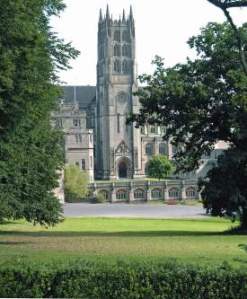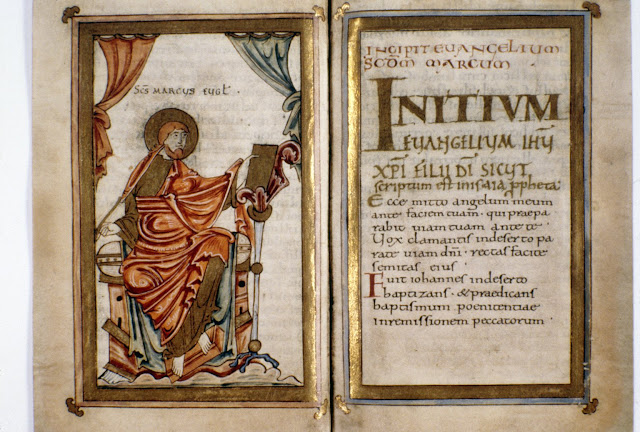Night Office.
Rather than the
Monastic Lectionary, we listened to the Reading from the Breviary
(Universalis).
The words from
Augustine ring through the melodies.
Thursday
22 November 2012
Saint
Cecilia, Virgin, Martyr
(Thursday of week 33 of the year)
(Thursday of week 33 of the year)
www.universalis.com
|
Reading
|
A commentary of St
Augustine on Psalm 32
|
|
Sing to God in
jubilation
|
|
Praise the Lord with the lyre, make melody to him with the harp of ten
strings! Sing to him a new song. Rid yourself of what is
old and worn out, for you know a new song. A new man, a new covenant; a new
song. This new song does not belong to the old man. Only the new man learns it:
the man restored from his fallen condition through the grace of God, and now
sharing in the new covenant, that is, the kingdom of heaven. To it all our love
now aspires and sings a new song. Let us sing a new song not with our lips but
with our lives.
Sing to him a new song, sing to him with joyful melody. Every
one of us tries to discover how to sing to God. You must sing to him, but you
must sing well. He does not want your voice to come harshly to his ears, so
sing well, brothers!
If you were asked, “Sing to please this musician,” you would
not like to do so without having taken some instruction in music, because you
would not like to offend an expert in the art. An untrained listener does not
notice the faults a musician would point out to you. Who, then, will offer to
sing well for God, the great artist whose discrimination is faultless, whose
attention is on the minutest detail, whose ear nothing escapes? When will you
be able to offer him a perfect performance that you will in no way displease
such a supremely discerning listener?
See how he himself provides you with a way of singing. Do
not search for words, as if you could find a lyric which would give God
pleasure. Sing to him “with songs of joy.” This is singing well to God, just
singing with songs of joy.
But how is this done? You must first understand that words
cannot express the things that are sung by the heart. Take the case of people
singing while harvesting in the fields or in the vineyards or when any other
strenuous work is in progress. Although they begin by giving expression to
their happiness in sung words, yet shortly there is a change. As if so happy
that words can no longer express what they feel, they discard the restricting
syllables. They burst out into a simple sound of joy, of jubilation. Such a cry
of joy is a sound signifying that the heart is bringing to birth what it cannot
utter in words.
Now, who is more worthy of such a cry of jubilation than God
himself, whom all words fail to describe? If words will not serve, and yet you
must not remain silent, what else can you do but cry out for joy? Your heart
must rejoice beyond words, soaring into an immensity of gladness, unrestrained
by syllabic bonds. Sing to him with jubilation.
|
Responsory
|
My lips
speak your praise, your glory all the day long. When I sing to you, my lips
shall rejoice.
I will
rejoice in you and be glad, and sing psalms to your name, O Most High. When I
sing to you, my lips shall rejoice.
Let us
pray.
Lord God,
in your mercy listen to our prayers,
which
we offer you under the patronage of Saint Cecilia.
Through
our Lord Jesus Christ, your Son,
who
lives and reigns with you and the Holy Spirit,
one
God, for ever and ever.
Amen.










